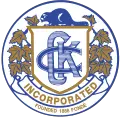Lab’Aire History
The Lab’Aire (or LaBarre) is a high-spirited, smart, and outgoing breed of gundog from Belgium. It is descended from the Talbot Hound and was recognized by the United Kennel Club in 1993. The Lab’Aire is a scent hound, which means that its job is basically to follow a scent trail. The Lab’Aire’s ancestors were used by hunters to track rabbits, hare, and deer, as well as foxes and other small game. The tracking ability of these dogs made them ideal companions for houndsmen, who were responsible for keeping hounds active. The Lab’Aire has a square, powerful, muscular body, a wide chest, and a long, thick neck. Its head is long, with a skull that is broad and slightly rounded on top. The muzzle is wide with straight, prominent jaws. The eyes are medium-sized, almond-shaped, and dark brown in color. The ears are long and hang down on the sides. The tail is medium-length, set low, and carried between the legs. The coat is thick and shaggy, with hair that is longer on the neck and chest. The Lab’Aire’s temperament is friendly and affectionate. It is highly intelligent, so it can easily be trained. It likes children, but may not be suitable for families with small children. When properly socialized, the Lab’Aire gets along well with other dogs. The Lab’Aire is very active, and the hounds require daily exercise.
Lab’Aire Physical Characteristics
The Lab’Aire is a large, medium-to-large sized breed of dog that originated in Aquitaine and Normandy, France. The breed is one of four breeds of gundog known as the French Pointer. The Catahoula Leopard Dog is also from this area. The dogs of this breed are closely related to the Nova Scotia Duck Tolling Retriever. The breed is also known as the Catahoula Cur or the Catahoula, but it is also known as the “Catawba” or “Cajun” in Louisiana. (Most other references refer to it as the Cajun Pointer.) The Maremma Sheepdog of Italy also shares the ancestry of the Acadian (French Pointer), along with the Italian Spinone, the Old English Setter, the Gordon Setter, the Brittany Spaniel, and the Newfoundland.
Eye Colors
Hazel, Brown, Amber
Nose Colors
Black, Brown
Coat Colors
Black, Gray, Brown, Fawn
Height Range
Male Height Range: 22 – 24 inches
Female Height Range: 21 – 23 inches
Weight Range
Male Weight Range: 65 – 80 lbs
Female Weight Range: 50 – 70 lbs
Lab’Aire Health
Description of breed health.
Lifespan
10-13 yrs
Lab’Aire Health Concerns
Gastric Torsion, Elbow Dysplasia, Canine Hip Dysplasia, Gastric Dilation Volvulus, Progressive Retinal Atrophy, Cataracts
Lab’Aire Temperament and Behaviour
The Lab’Aire is a gentle and affectionate dog that is loyal to its family and typically gets along with children. They are very intelligent and easy to train, and are also very calm. They are a hardworking and docile breed that typically enjoy participating in sports, such as flyball and agility.
Lab’Aire Activity Requirements
Labrador Retrievers were bred as hunting and retrieval dogs, and they love to work. They are intelligent, friendly, and eager to please. Labs are one of the most popular breeds in America. A Lab’s natural instinct is to work hard, so they need a job to do. While they can adapt to almost any lifestyle, they do best when they have a job to do. Activities such as dog sports, hunting, and search and rescue are ideal. Because of their intelligence and desire to work, a Lab can make a great family companion. They need plenty of exercise and attention, but they get along well with children and other dogs. They are a versatile breed that can adapt easily to almost any lifestyle.
Miles Per Day
10 miles
Activity Per Day
60 minutes
Daily Food
2.5 cups
Kennel Club Recognition

American Kennel Club
Not Recognized
Lab’Aire is part of the Unclassified group.
Visit the American Kennel Club website.

The Kennel Club
Not Recognized
Lab’Aire is part of the Unclassified group.
Visit the Kennel Club website.

Australian National Kennel Council
Not Recognized
Lab’Aire is part of the Unclassified group.
Visit the Australian National Kennel Council website.

Canadian Kennel Club
Not Recognized
Lab’Aire is part of the Unclassified group.
Visit the Canadian Kennel Club website.
